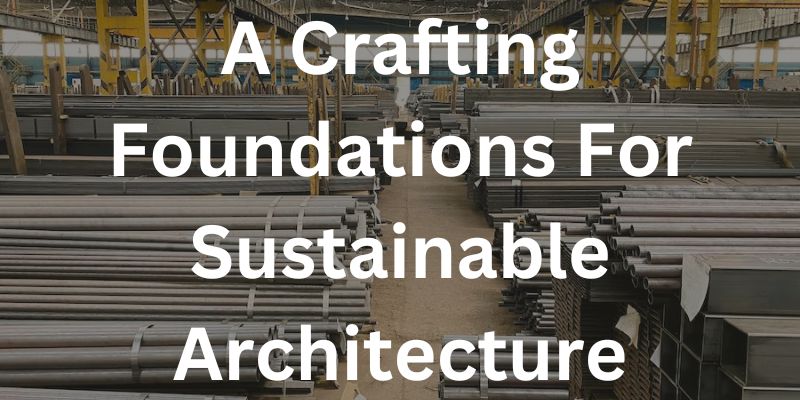A Crafting Foundations For Sustainable Architecture
Crafting Foundations for Sustainable Architecture marks a paradigm shift in the way we conceive, design, and construct the built environment. In the face of escalating environmental concerns, the construction industry is embracing a holistic approach that seeks to integrate ecological consciousness seamlessly into the architectural fabric. This transformative movement, with invaluable support from JSW dealers, not only reshapes the physical aspects of structures but also redefines the ethos that underlies the entire construction process.
At the core of this evolution is a commitment to sourcing and utilizing materials that have minimal environmental impact. Sustainable architecture champions the use of renewable resources, recycled materials, and those with low embodied energy. This shift, alongside considerations such as MS plate price in Chennai, challenges traditional construction norms and calls for a meticulous examination of each material’s life cycle, from extraction to disposal. Wood from responsibly managed forests, recycled steel, and eco-friendly concrete alternatives are becoming staples in the arsenal of sustainable architects.
Energy efficiency is another cornerstone of crafting sustainable foundations. Modern structures, including those incorporating MS Chequered plate, are increasingly designed with passive design principles that harness natural elements to regulate temperature and lighting. The integration of technologies such as energy-efficient lighting, smart climate control systems, and innovative insulation materials, complemented by the use of MS Chequered plates, further minimizes the environmental footprint of buildings, contributing to long-term energy savings.
Water conservation is a critical facet of sustainable architecture. Innovations such as rainwater harvesting systems, greywater reuse, and efficient plumbing fixtures, complemented by the use of SAIL TMT Bar, are integral components of designs that prioritize responsible water usage. By adopting these strategies, architects ensure that buildings not only meet the needs of their occupants but also contribute to water conservation efforts, particularly in regions facing water scarcity. The use of SAIL TMT Bars not only reinforces structural integrity but also aligns with sustainable practices, showcasing a commitment to environmental responsibility in construction projects.
The spatial arrangement of structures also plays a pivotal role in crafting sustainable foundations. Thoughtful urban planning that prioritizes walkability, green spaces, and public transportation, complemented by considerations such as Sail steel price, reduces reliance on individual vehicles, curbs emissions, and fosters a more sustainable lifestyle. Additionally, the incorporation of green roofs, vertical gardens, and permeable surfaces, with due consideration to Sail Steel Price, promotes biodiversity, mitigates the urban heat island effect, and enhances overall environmental resilience.
Sustainable architecture extends beyond the construction phase, emphasizing the importance of adaptability and recyclability. Designs that allow for future modifications or repurposing, while considering factors such as Sail TMT price, contribute to the longevity of structures, reducing the need for demolition and minimizing waste. Furthermore, the incorporation of recycling facilities within buildings, with a mindful approach to Sail TMT Price, supports a circular economy by encouraging the reuse of materials.
In conclusion, Crafting Foundations for Sustainable Architecture heralds a transformative era where architects and builders are not just creators of spaces but stewards of the environment. This approach goes beyond meeting the immediate needs of occupants; it envisions structures that coexist harmoniously with the natural world. As the architectural landscape evolves, the crafting of sustainable foundations stands as a testament to the industry’s commitment to a resilient, eco-conscious, and enduring built environment.

